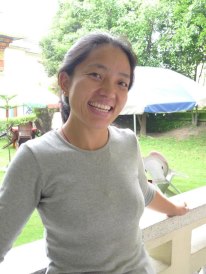Releasing Life

Dear Friends, The practice of releasing life is said to dispel obstacles that shorten our life, purify negative karma accumulated by taking life, as well as lengthening our life so that we have more time to accomplish the Dharma. During one of Phakchok Rinpoche's teachings to students of the Rangjung Yeshe Shedra, Rinpoche encouraged everyone to make a donation towards his yearly fish release, which many did. The fish release took place on the 2nd of March a few days after the Tsekar Drupchen. For the event Phakchok Rinpoche invited all the young monks from his two monasteries Riwoche and Vajravarahi Gompa. We left around seven in the morning in a bus and drove approximately four hours to a small village were two rivers merge. Since it was also a holiday trip for the monks, we arrived about two hours before the Rinpoches came. This gave the monks enough time to play, stroll around and to have a pick-nick next to the river bed. Chokling Rinpoche and Phakchok R


